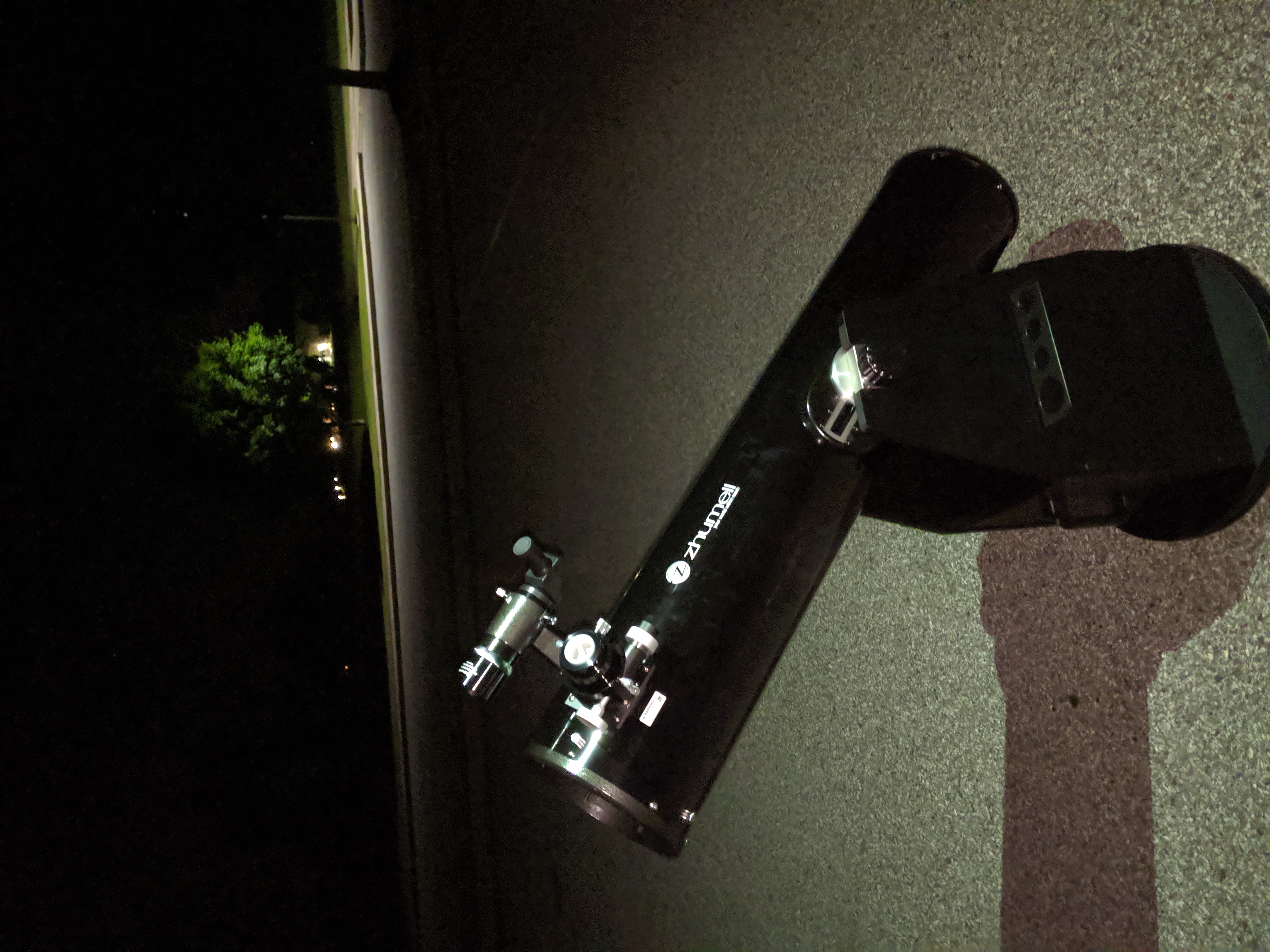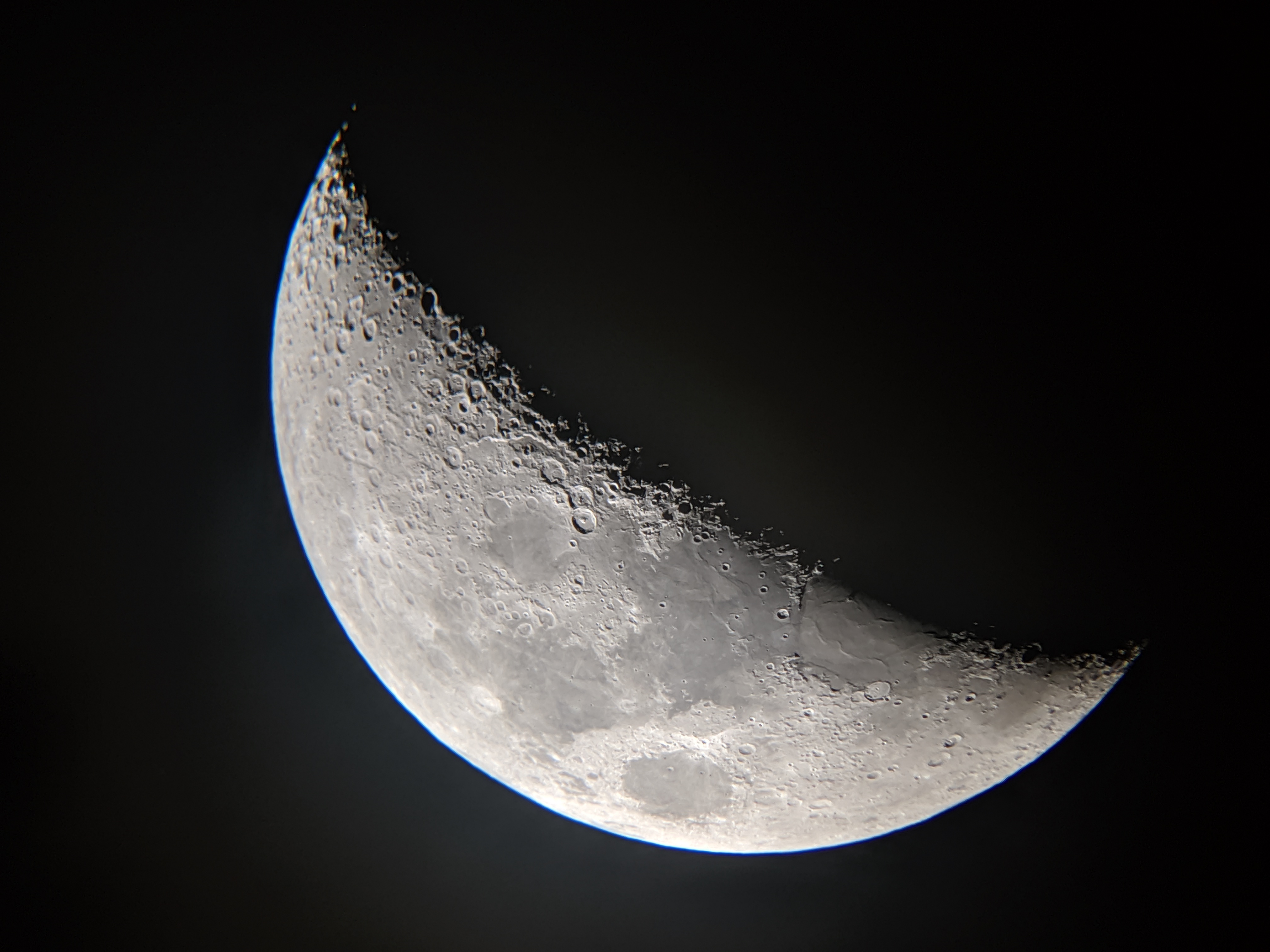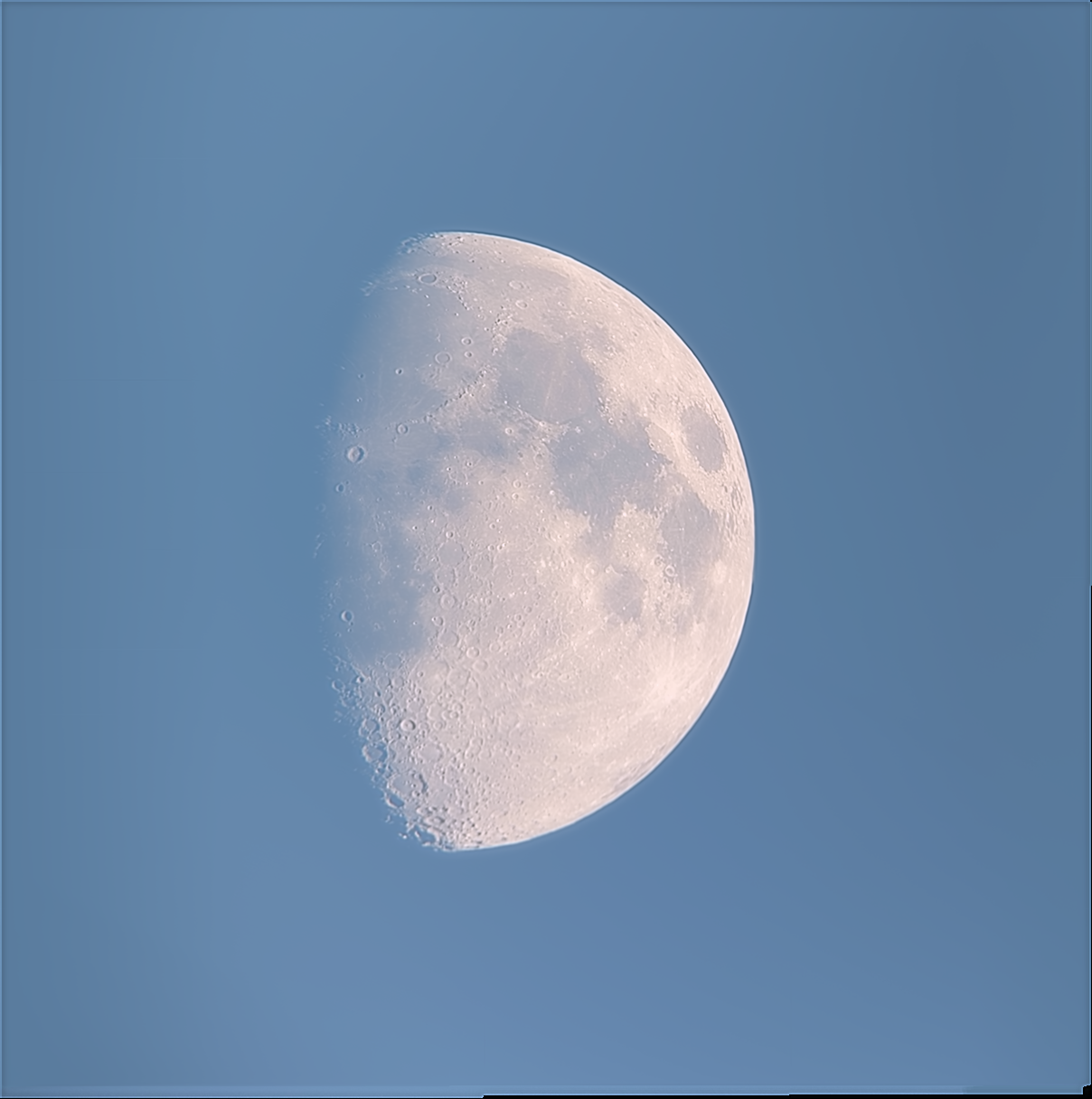To The Moon
When I was younger I used to have a pretty small telescope that I bought from Walmart. It wasn't much, but to my younger self it was unbelievable seeing the craters up close with my own eyes. It also inspired me to eventually get an upgrade once I had enough money after starting my career. So with that inspiration, I did my research and bought an 8" Dobsonian Orion SkyLine Telescope (also built as a Zhumell!) as one of my first big purchases.

Initially I used it to during calm nights to relax and see some great views. Eventually, I decided to buy a phone attachment and start learning about capturing and processing astrophotography. I used the following software and process to help stack and process frames of the moon captured from an iPhone for a clear picture:
Make sure the weather is clear with no clouds
iPhone 13 (current) - Take clear videos of the moon, 30 secs to a min
PIPP - Used for pre-processing captured videos
AutoStakkert - Highlight key features of the moon (craters) and stack the processed video with selected frames
Registax - Wavelets and color balance of the stacked image
Through trial and error I was finally able to capture a few clear images of the moon.

There's still a lot of practice needed to clear up some of the blurriness, but it was great being able to share what I could see. I continue to bring out my gear and process a few pics when I can. I also had the opportunity to do my first daylight moon capture just as sunset approached.

This turned out to be my favorite capture with just enough blue sky and a crisp moon. There's something about seeing the moon during the day that makes it seem unreal. This also gave me the idea for my next project. I recently bought a solar filter that I'm modifying to fit on the telescope. I still haven't seen the sun through a telescope so I figured it would be a great opportunity as a next capture. I just need to be careful I don't install the solar filter backwards or there might be a few problems!
My next few projects with the telescope are:
- Fit the solar filter and capture a few pictures of the sun
- Capture and process Saturn, Jupiter, and Mars
- Set the telescope on a Star Tracker to avoid manual movement